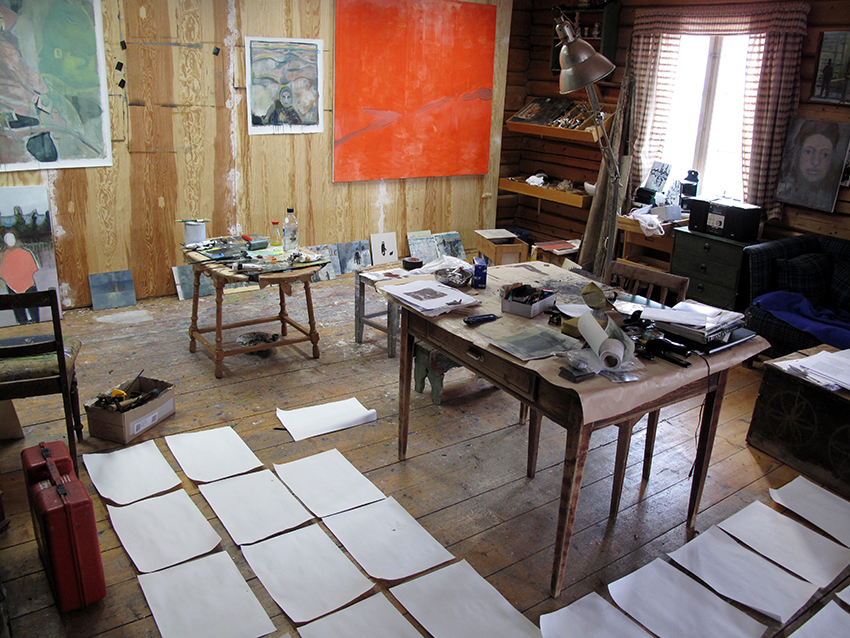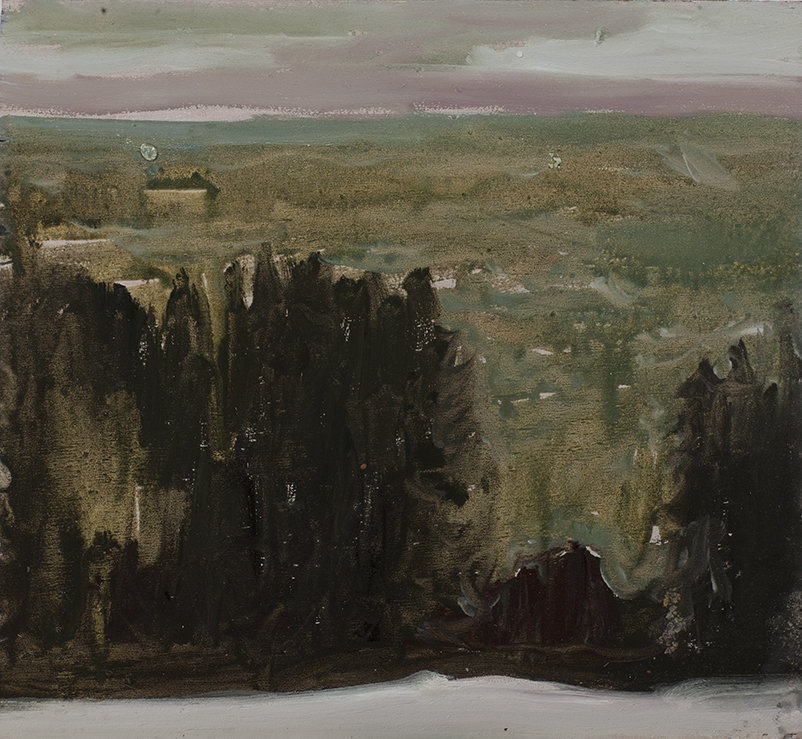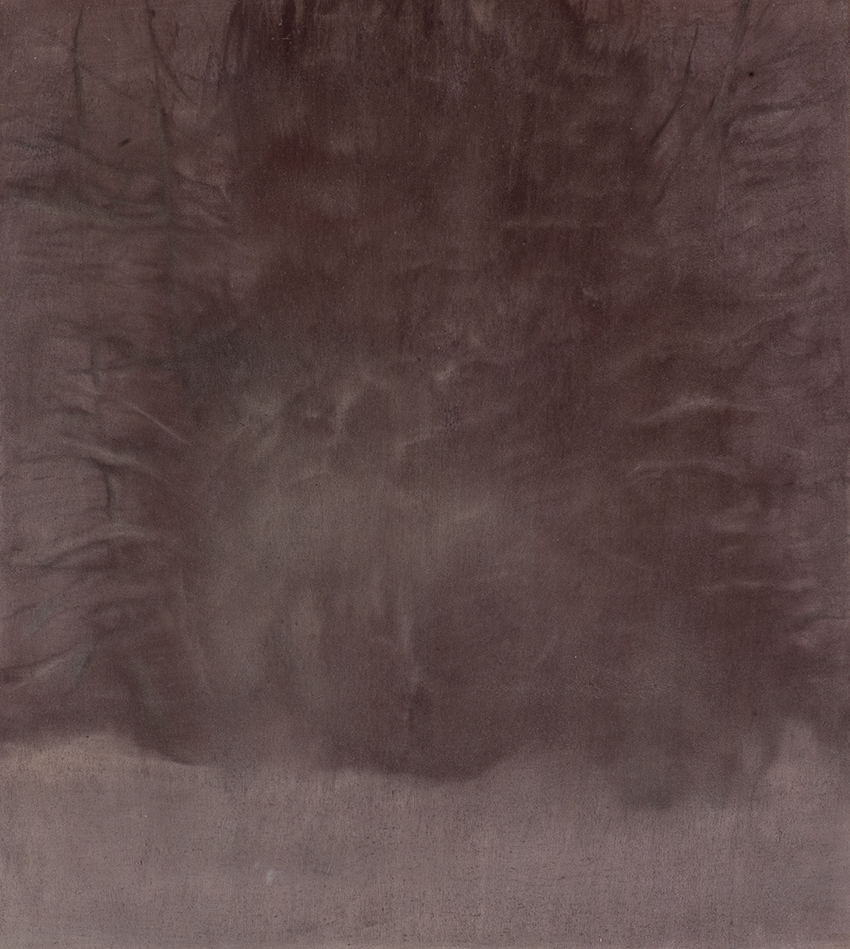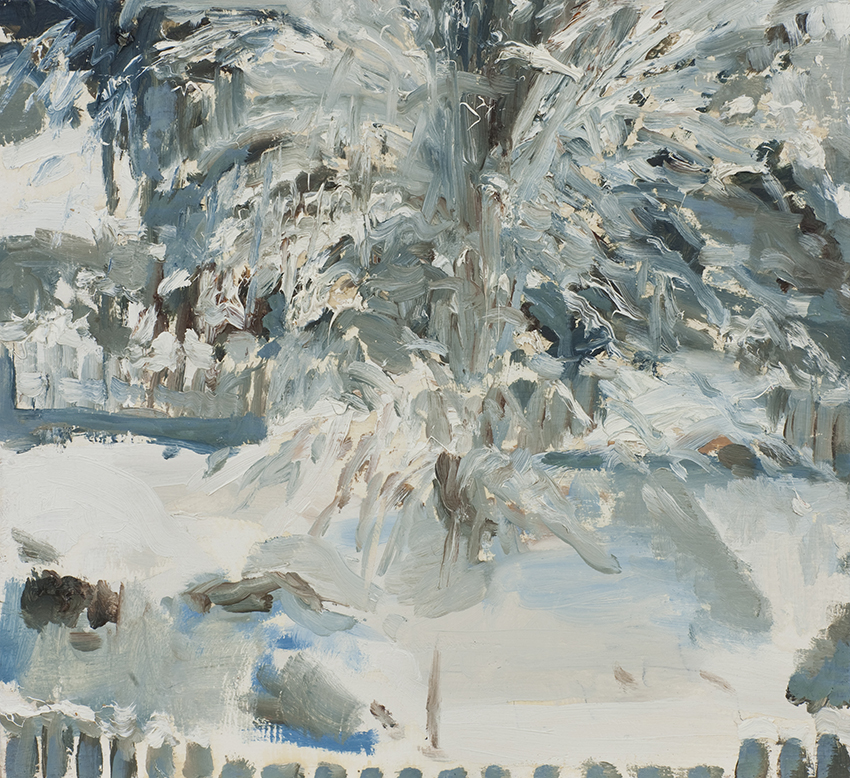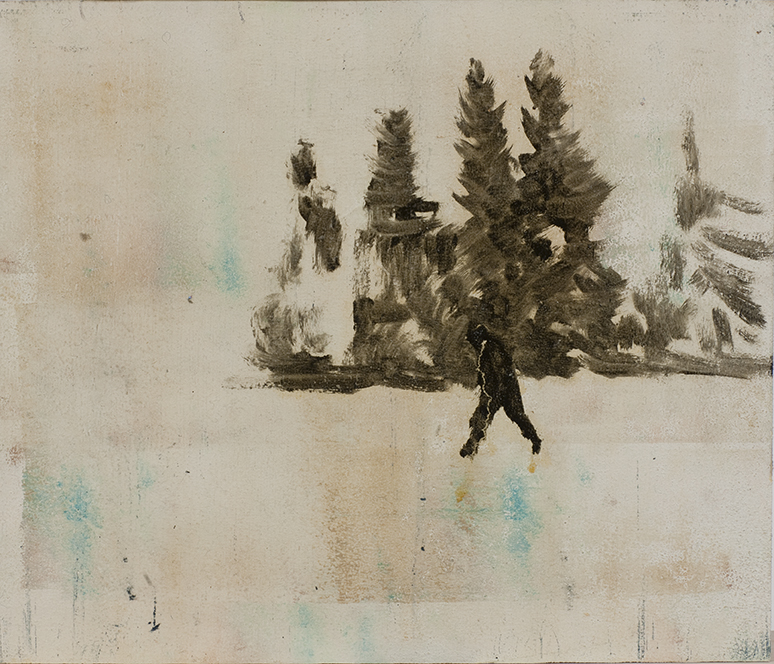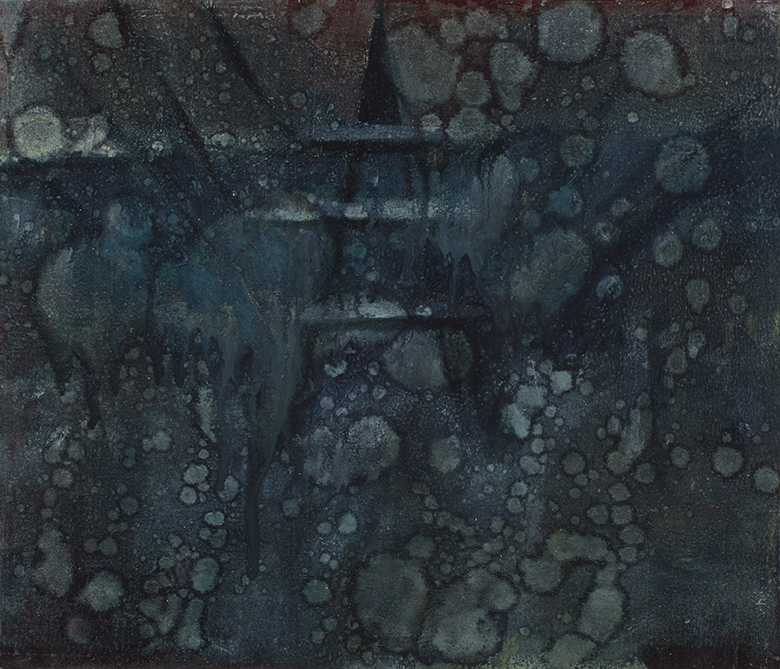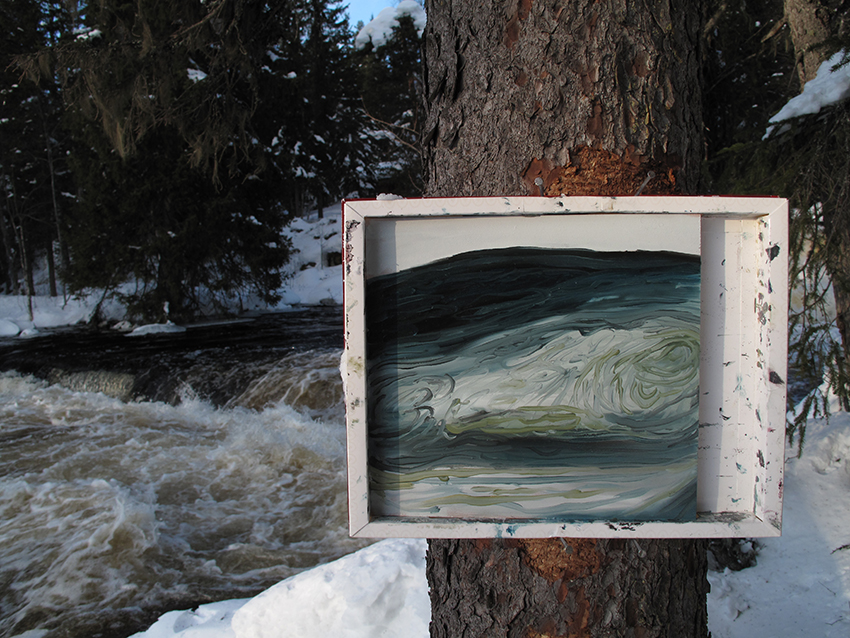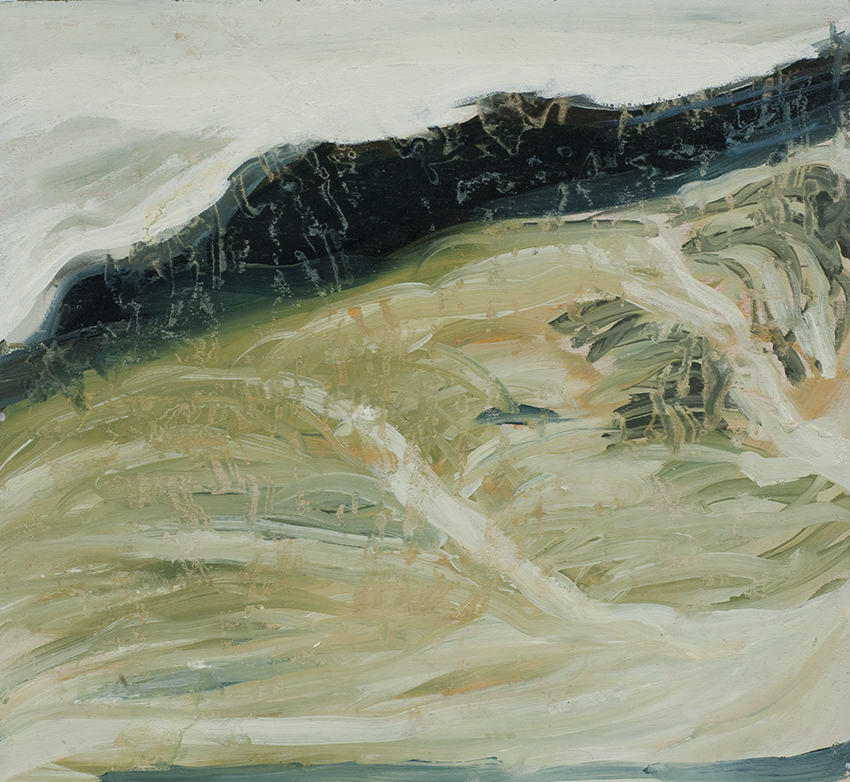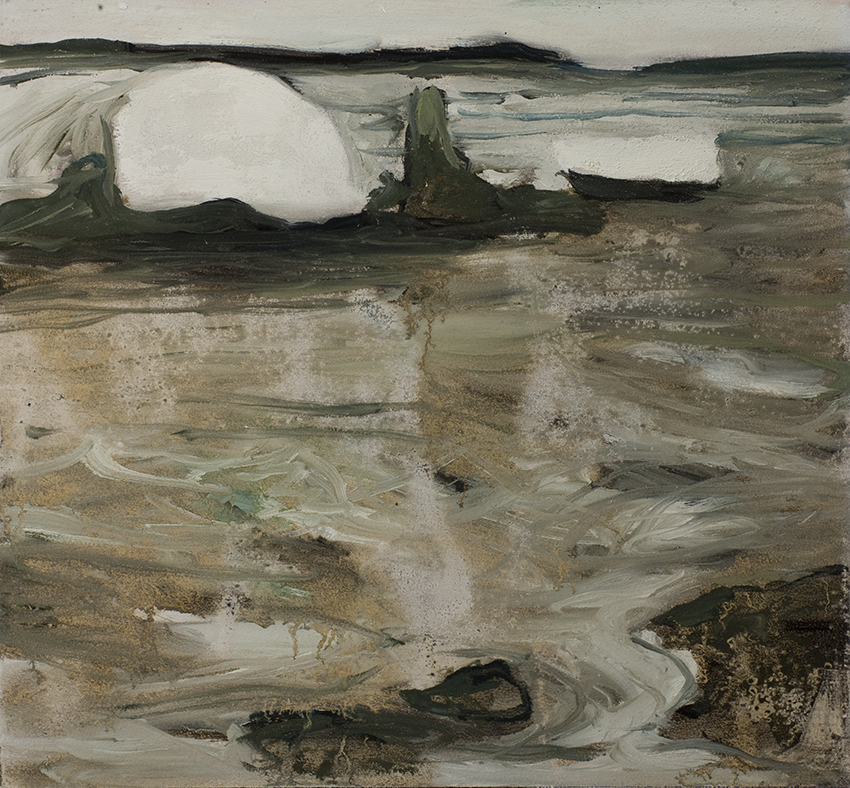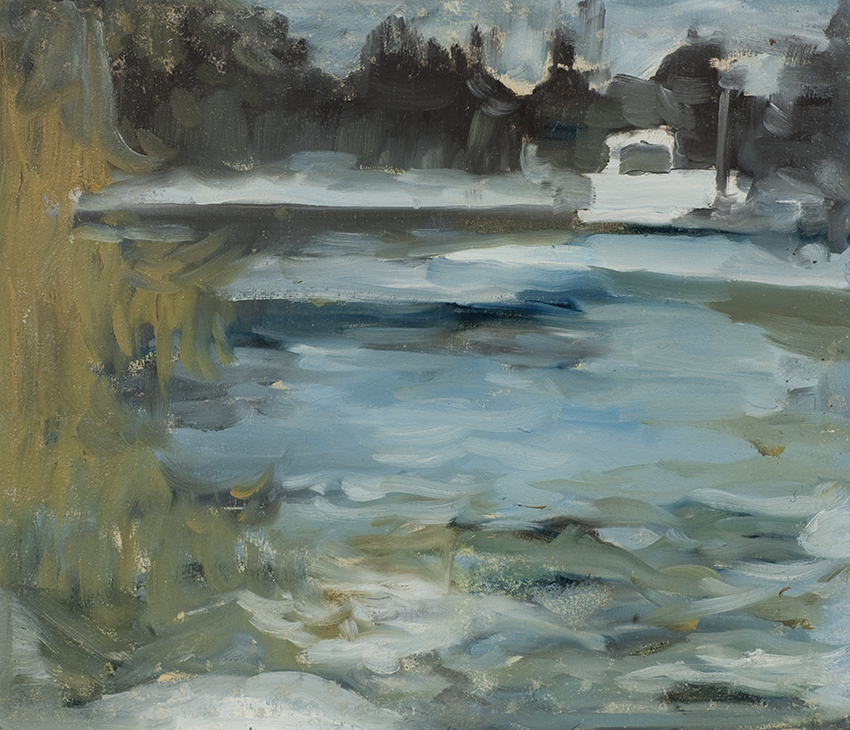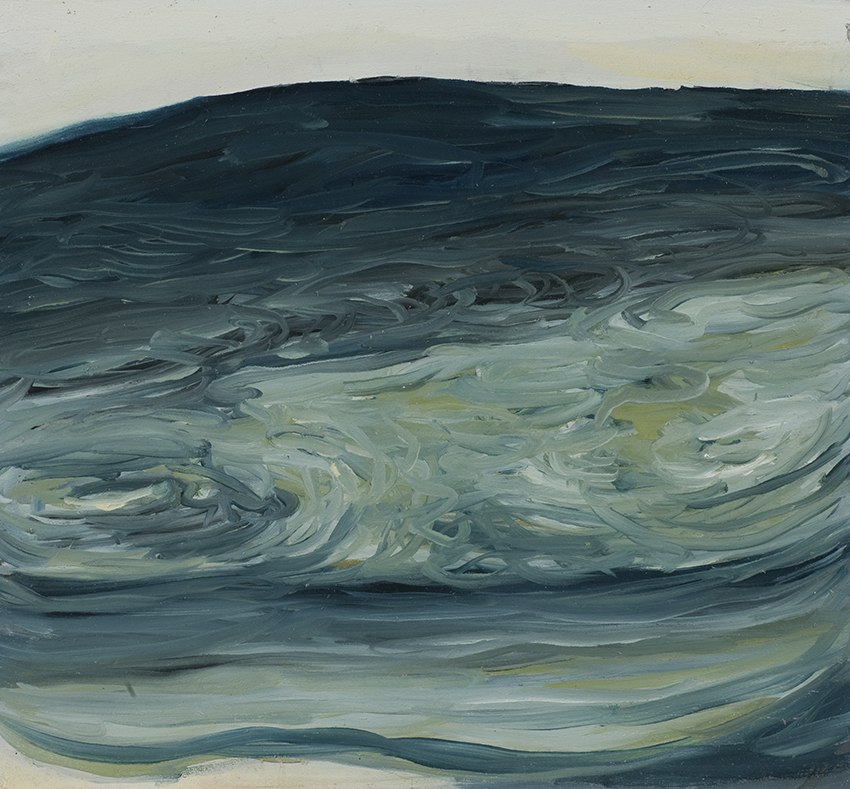Ringsveen
The first ten months of my fellowship was spent at Ringsveen, a farm located near Lillehammer, a two and half hour drive from Oslo. Since I had applied for the residency and the fellowship around the same time and I happened to receive both, it made sense to start my search here. Ringsveen used to be the former home of the modernist painter Jakob Weidemann (1923–2001). Even before Weidemann came to work in the area, Lillehammer had been instrumental in the development of Norwegian modernism. Cheap rent, increased accessibility due to the newly constructed train lines and the renowned fresh air were some of the reasons why a colony of outdoor painters took form in the area at the end of the nineteenth century. I had a personal interest in coming to Lillehammer; my grandparents used to live here and the surrounding forest was the woods of my childhood.
At Ringsveen I could spend whole days outside painting. I was alone, which meant I could devote most of my time to work. This involved a good portion of what most people would call daydreaming. It is seldom I allow myself the pleasure to stop and intensively observe clouds drift by or to look at how the sun hits the side of a tree, but at Ringsveen I had the time as well as the physical and mental space to do just that. This dream-like state of fumbling about observing the landscape had a deep impact on the painting process.
This new state of observation also came with a faster pace of working; I had to keep track with changes taking place in front of me. The state of being alert and attentive, when painting outside is in principle not unlike the kind of attention required for traditional photography. However, a viewfinder naturally crops and cancels out the full range of changes taking place. Using digital photography, one often looks through a screen. Both the viewfinder and the screen create an artificial distance to the subject. Painting landscape from direct observation you are confronted with the scene as a whole. This sets the stage for another presence. When you are in the midst of painting, you might not look up for a moment and in that instant the sun goes behind a cloud and suddenly everything has changed in the landscape and the painting. This is a new reality that has to be taken into consideration. Even seemingly mundane external influences, like someone walking their dog can alter the situation. Such events can easily make their way into new paintings. In this condition, place is not experienced as a stable, unchanging force, represented by an image arrested in time, but as a continuum of events that have a transient quality to them.
Studio without walls
I admire paintings that enable the viewer to take on an active role questioning and possibly tracing the painting process from beginning to end. One of the benefits of working outside was the imposed restrictions, which made it easier to achieve a more direct handling of the paint. This in turn also allowed me to see my process more clearly. The first paintings turned out quite gestural; often having a rough unfinished look to them. The events I saw happening before me had a correspondence to the type of marks that were made on the canvas. For instance, long more stable brush marks for clouds in the distance versus short restless ones for trees blowing in the wind nearby, were ways of echoing movement and rhythm in the landscape.
As time progressed the immediate impulse to capture my surroundings in painting was followed by a longer way of looking. I started with painting the view in all directions. The work became more systematic and I would often return to the same site to paint. To work out the same subject repeatedly became an important method to see and understand how painting in different locations produce different results.
At Ringsveen, I painted outside in the daytime and continued inside at night. Subjects I was observing outside in the daytime, such as the forest wall surrounding the farm, seen in Land’s End, would be sites I would return to when paintings from memory in the studio at night. These “memory paintings”, like Forest Wall (red), were often more atmospheric, darker and flatter looking than the ones made outside. The uniform application of paint, which made the paintings more frontal, also had a tendency to offer less space of projection for the viewer within the painting. Going back and forth between inside and outside, I came to associate this reduced space in the paintings themselves to the change in location of the studio; the finite wooden studio walls inside versus the potentially endless space outside. Since I was using wooden boards when painting the forest wall, I was in fact painting wood on wood. The studio walls, which also were made of wood, represented a similar repetition of the outside.
Nature’s still life
The coming of snow transformed the landscape at Ringsveen. With fall passing into winter, climatic changes, such as freezing temperatures, became visible in both the application of paint and how my body reacted in relation to the surroundings. On cold days I could only work for short amounts of time. Sometimes even the paint would freeze. The slow handling of paint had a visual correspondence to how my body gradually felt stiff and numb. With each new layer of freshly fallen snow, the paintings seemed to grow more massive. To prevent paintings from clogging up, I began to add additional linseed oil. This produced more viscosity and allowed a smoother handling of the paint. When I returned inside, the paintings would begin to thaw, producing structural changes in the paint; streaks, runs and open pores. Like tracks in the snow, the different types of mark making, gave an indication of where and in what conditions I had physically been standing. In order to see the influence of geographical place I had to be removed from it. In fact I could not continue work on a painting made outside inside without reworking the whole motif. New marks made inside on a canvas executed outside would appear artificial and dishonest and transform the painting to such a degree that it did not adhere with the initial observations. Even small alterations could mean that the spirit of the initial outcome was gone. In removing a painting from its place of making, it was easier to analyze and judge the outcome, but it fixed the process. This was less visible when only working inside. Taking a photo of the painting or physically moving it to another room, became ways of achieving a similar critical stance. The build up of white paint in Garden (West) came as a result of coagulating paint. The jagged line that goes through the figure Walker was produced when the painting was moved inside.
Outside in
Bringing the outside in contributed to a heightened awareness of how the organization of the workspace influences the painting process. Outside I worked with oil on prepared board, which proved stable under shifting weather conditions. Figuring out where to stand and setting up a good working situation outside took considerable time and care. I would usually use a limited color palette and carry one board with me at a time. Longer excursions from the studio precluded me from getting new material, which meant I would have to work with what I had at hand. A painting was never finished “on site”, as wet oil paintings had to be handled in such a way that they did not to get ruined in the backpack on the way home and as noted earlier, once inside they could still change their appearance.
Inside I worked on various types of support, including canvas, board and paper. The paintings varied in size and develop slowly over time. I experimented with different paints, including watercolor, ink and acrylic paint, often in response to the way I had seen my paintings react to elements outside or to the way they changed when moved inside. Even though these marks emulated the space outside, they were still very much a result of an indoor situation. In Local Monument I painted a utility pole, which is a predominant feature in the landscape behind the farm. In the painting made outside from observation the brush marks are clearly visible with heavy build-up of paint. The painting made inside at night is flat, dark and obscure spotted by turpentine stains.
A Box of Chocolates
In researching local art history at Ringsveen, I came across the painter Frederik Collett (1839–1914), known for his winter landscapes realized along the Mesna River.[3] Collett had commissioned a local company specializing in the construction of railway wagons to help him create mobile studios based on his own drawings. These studios included a heating element, which enabled Collett to work in situ in front of the motif, even under harsh winter conditions.
I also began to experiment with my studio situation outdoors. For Christmas I had received a box of Kong Haakon chocolates. As it happened, the precut boards that I used for painting outside were the exact dimensions of the box’s interior. I could use it both for transportation and as an easel by attaching it to a tree. This convenient solution allowed me to go on longer excursions into the forest and up along the Mesna River.
Like Collett, I became fascinated with painting water. The box acted as a framing device, which also produced a type of distance from the surrounding landscape. The border allowed for a more concentrated view on the painting itself and made me focus on particular details in the landscape. The extra linseed oil that I had added on cold days to avoid the paint from getting too thick allowed for more fluid brush marks now as it had gotten warmer. Studying the river had a hypnotizing effect. The constant repetition of forms and movements in the water stood in contrast to the snow standing still on the surrounding riverbed. The snow in this case fixed the position of the picture and acted like a frame itself. This separation contributed to an ongoing simplification of the motif, giving the paintings another type of formal appearance.

